 W
WThe Dell Venue Pro, codenamed Lightning, was a smartphone running the Windows Phone operating system. The phone used the T-Mobile network, but was only available for purchase at Microsoft retail stores or directly from Dell.
 W
WThe Fujitsu Toshiba IS12T is a mobile smartphone running the Windows Phone operating system and was designed and manufactured by Fujitsu Toshiba. The phone is waterproof and is the first and only Windows Phone to be officially released in Japan under carrier KDDI.
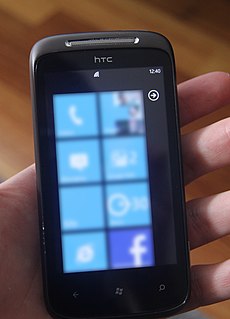 W
WThe HTC 7 Mozart, is a mobile smartphone running the Windows Phone operating system. The phone was designed and manufactured by HTC.
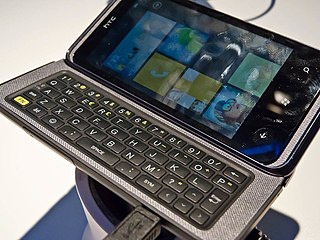 W
WThe HTC 7 Pro is a business class smartphone, part of the HTC 7 series of Internet-enabled, Windows Phone smartphones designed and marketed by HTC Corporation. It is the successor of the HTC Touch Pro2 with a left-side slide-out QWERTY keyboard, with tilting screen.
 W
WThe HTC 7 Surround is a smartphone created by HTC running on the Windows Phone 7 operating system. The HTC Surround launched on November 8, 2010 on AT&T.
 W
WThe HTC Trophy is one of several Windows Phone handsets produced by HTC Corporation.
 W
WThe HTC HD7, is a smartphone running the Windows Phone OS operating system. The phone was designed and manufactured by HTC. It is the successor to the HTC HD2, and it has a special variant which is the HTC HD7S.
 W
WThe HTC One (M8) is an Android or Windows smartphone manufactured and marketed by HTC. Following a number of leaks that occurred during the months prior, the device was officially unveiled in a press conference on March 25, 2014, and released the same day by Verizon Wireless at retail, and by other Canadian and United States carriers for online orders prior to its wider retail availability in mid-April.
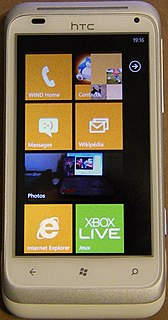 W
WThe HTC Radar is a smartphone running the Windows Phone OS. The phone was designed and manufactured by HTC Corporation. It was announced 1 September 2011, and launched on 12 October 2011.
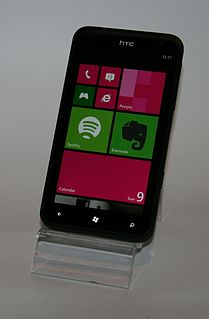 W
WThe HTC Titan, is a smartphone running the Windows Phone OS 7.5 operating system. The phone was designed and manufactured by HTC Corporation. It is the successor to the HTC HD7.
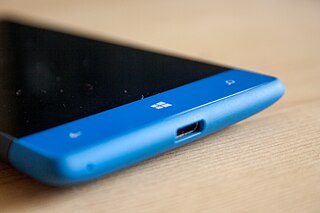 W
WThe Windows Phone 8S by HTC was announced by HTC Corporation on September 19, 2012 and released on December 7, 2012 in Canada. It is a cheaper, lower-end version of the Windows Phone 8X by HTC. Despite its availability in Canada, HTC announced that the 8S will not be sold in the United States because the company plans to focus instead on the 8X, which is considered its signature phone on the Windows operating system.
 W
WThe Windows Phone 8X by HTC is a smartphone that was announced by HTC Corporation on September 19, 2012.
 W
WThe Huawei Ascend W1 is Huawei's first device to run Windows Phone 8. It was announced at the 2013 Consumer Electronics Show (CES). It was released in January 2013 as the least expensive Windows Phone in the Chinese market.
 W
WThe LG Optimus 7 is a slate smartphone which runs Microsoft's Windows Phone operating system. The Optimus 7 is part of the first generation Windows Phone lineup launched October 2010.
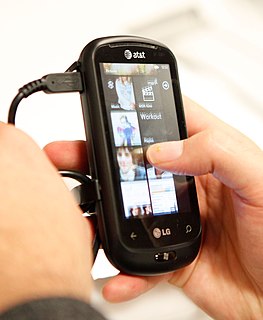 W
WThe LG Quantum or Optimus 7Q is a slider smartphone which runs Microsoft's Windows Phone operating system. The LG Quantum was launched November 8, 2010 on AT&T. The C900 ran the Windows Phone 7.0 operating system out-of-the-box and was later updated to Windows Phone 7.5. The C900 also supports the Windows Phone 7.8 update which launched which offers the new Windows Phone 8.0 style tiles and other improvements. It is possible to upgrade it using an alternate method.
 W
WMicrosoft Lumia is a discontinued line of mobile devices that was originally designed and marketed by Nokia and later by Microsoft Mobile. Introduced in November 2011, the line was the result of a long-term partnership between Nokia and Microsoft—as such, Lumia smartphones run on Microsoft software, the Windows Phone operating system; and later the newer Windows 10 Mobile. The Lumia name is derived from the partitive plural form of the Finnish word lumi, meaning "snow".
 W
WThe Microsoft Lumia 435 is a mobile phone developed by Microsoft Mobile Oy for emerging markets. It was introduced in January 2015 to compete with Google's Android One. The phone offers Lumia Denim out of the box and comes pre-installed with Lumia Selfie.
 W
WThe Microsoft Lumia 532 is an entry-level smartphone developed by Microsoft Mobile that runs the Windows Phone 8.1 Operating System and is upgradable to Windows 10 Mobile operating system.
 W
WThe Microsoft Lumia 535 is an entry-level smartphone developed by Microsoft Mobile that runs the Windows Phone 8.1 OS and is upgradable to Windows 10 Mobile. The phone features a 5-inch display. It is equipped with a 5 MP front-facing camera. It is the first Microsoft-branded phone to be used after its acquisition of Nokia's mobile phone business.
 W
WThe Microsoft Lumia 540 is a low-cost smartphone from the Microsoft Lumia family.
 W
WThe Microsoft Lumia 640 and Microsoft Lumia 640 XL are Windows Phone smartphones developed by Microsoft Mobile. Both phones were announced on March 2, 2015, and are the successors to the Nokia Lumia 630 series and the Lumia 1320, respectively. The phones are primarily aimed at developing markets, although they are also available in developed markets as lower-cost options compared to other phones in their classes. The two devices became available in the US and most other markets in June 2015.
 W
WThe Nokia Lumia 505 is a budget smartphone developed by Nokia that runs Microsoft's Windows Phone 7.8 operating system. It was announced in December 2012 as a Telcel-exclusive device and became available in early January 2013 in Mexico. In late January 2013 the Lumia 505 became available in Colombia, Chile and Peru on Claro Americas. It was exclusive to the Latin American market and was not announced or released for any other markets.
 W
WThe Nokia Lumia 520 is an entry-level Windows Phone 8 smartphone announced by Nokia at the 2013 Mobile World Congress.
 W
WThe Nokia Lumia 530 is an entry-level smartphone developed by Microsoft Mobile that runs the Windows Phone 8.1 operating system.
 W
WNokia Lumia 610 is a Windows Phone smartphone announced at Mobile World Congress 2012. It is designed for young consumers that are buying their first smartphone. The Lumia 610 has a curvy, metallic design. Like the Lumia 710, it comes in cyan, magenta, black and white. The black and magenta version have a rubberized back instead of the glossy back as found in the white and cyan version of this phone.
 W
WThe Nokia Lumia 620 is an entry-level smartphone designed, developed and marketed by Nokia. It is the successor to the Lumia 610, and is one of the first Nokia phones to implement Windows Phone 8 alongside the Nokia Lumia 920 and Nokia Lumia 820. Although sharing a similar name with the Lumia 610, the Lumia 620 is a major overhaul over its predecessor, employing a 1.0 GHz dual-core processor. It also has exchangeable back covers which come in black, white, magenta, yellow, cyan etc.
 W
WThe Nokia Lumia 625 is a Windows Phone with a 4.7-inch IPS LCD WVGA (480x800) screen and 4G support. It was presented on July 23, 2013. It can be loaded up with the latest software update for Windows Phone 8.1, as well as Nokia's firmware update 'Denim'. It borrows features from the Nokia Lumia 1520, the Lumia 1020 and the Lumia 925.
 W
WThe Nokia Lumia 630 is a smartphone developed by Microsoft Mobile that runs Microsoft's Windows Phone 8.1 operating system. It was announced on 2 April 2014, at Microsoft Build 2014 and scheduled to be released in July 2014. It has a Qualcomm Snapdragon 400 SoC with a quad-core processor and Adreno 305 GPU. Additionally, it has a 4.5-inch display and a 5 MP camera. The Lumia 635 is similar but 4G-compatible, lacks a dual-SIM version and comes in a different finish, while the Lumia 636 and 638 are identical, but come with 1 GB of RAM and are currently available only in China and India respectively.
 W
WThe Nokia Lumia 630 is a smartphone developed by Microsoft Mobile that runs Microsoft's Windows Phone 8.1 operating system. It was announced on 2 April 2014, at Microsoft Build 2014 and scheduled to be released in July 2014. It has a Qualcomm Snapdragon 400 SoC with a quad-core processor and Adreno 305 GPU. Additionally, it has a 4.5-inch display and a 5 MP camera. The Lumia 635 is similar but 4G-compatible, lacks a dual-SIM version and comes in a different finish, while the Lumia 636 and 638 are identical, but come with 1 GB of RAM and are currently available only in China and India respectively.
 W
WNokia Lumia 710 is a Windows Phone 7 smartphone. Its release is part of a change in company's direction which has resulted in a shift from Symbian platform towards Windows Phone for smartphones. While the Nokia Lumia 800 and Lumia 900 target the high-end of the smartphone marketplace, the Lumia 610 and Lumia 710 are aimed at the mid-range price point. This generation of Lumia phones ship with Windows Phone 7.5 "Mango". Its design is almost the same as the Symbian Nokia 603, announced just over a week earlier.
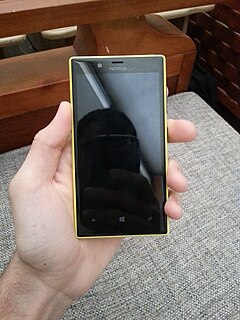 W
WThe Nokia Lumia 720 is a Windows Phone 8 device manufactured by Nokia. It was announced at the 2013 Mobile World Congress.
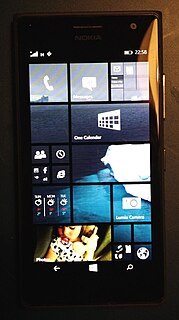 W
WThe Nokia Lumia 735 is a Windows Phone 8.1 smartphone developed by Nokia. Unveiled on 4 September 2014 at IFA Berlin, alongside the Lumia 730, the device is a smartphone with a particular emphasis on "selfies", aided by a 5-megapixel, wide-angle front-facing camera.
 W
WNokia Lumia 800 is a smartphone from Nokia, first unveiled on 26 October 2011 at the Nokia World 2011 event. It originally runs on Windows Phone 7.5 "Mango"—it was Nokia's first device to run the Windows Phone operating system and marked the company's shift from Symbian for their smartphones. It was Nokia's flagship upon the original release in Europe in November 2011, and was thus also a highly important product for Nokia's mobile phone business.
 W
WThe Nokia Lumia 820 is a smartphone designed, developed and marketed by Nokia. It is the successor to the Lumia 800 and is one of the first Nokia phones to implement Windows Phone 8 alongside the Nokia Lumia 920. Although sharing a similar appearance with the Lumia 800, the Lumia 820 is a major overhaul over its predecessor, sporting a 4.3 inches (110 mm) diagonal OLED display with scratch resistant glass, though lacking Gorilla Glass protection, 1.5 GHz dual-core processor, and an 8.7-megapixel camera. The phone will come with LTE connectivity and a wireless-charging option. The 820 is the first Nokia Windows Phone OS based smartphone to embed a microSD card slot.
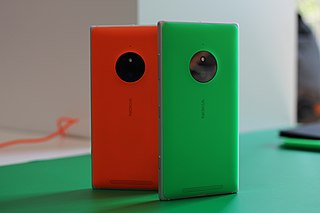 W
WThe Nokia Lumia 830 is a smartphone developed by Microsoft Mobile and branded as "Nokia" that runs Microsoft's Windows Phone 8.1 operating system. It was announced on September 4, 2014 at Internationale Funkausstellung Berlin and released in October 2014. It is a successor to the 2012 Nokia Lumia 820 and marketed as an "affordable flagship".
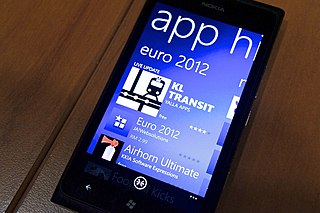 W
WThe Nokia Lumia 900 is a Windows Phone-powered smartphone, first unveiled on January 9, 2012 by Nokia at Consumer Electronics Show 2012, where it won the Best Smartphone award in January 2012. The phone has 4G LTE support and was released in April 2012. The Lumia 900 was the flagship smartphone of the Lumia range until the release of its successor, the Lumia 920.
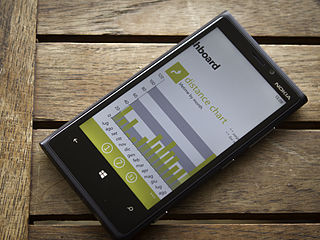 W
WNokia Lumia 920 is a smartphone developed by Nokia that runs the Windows Phone 8 operating system. It was announced on September 5, 2012, and was first released on November 2, 2012. It has a 1.5 GHz dual-core Qualcomm Krait CPU and a 4.5" IPS TFT LCD display, as well as a high-sensitivity capacitive touchscreen that can be used with gloves and fingernails; the display is covered by curved Gorilla Glass and has a 9 ms response time. The phone features an 8.7-megapixel PureView camera with OIS; it was the first smartphone to offer that technology, as well as to support Qi inductive charging. The phone comes with 32 GB of internal storage, but has no expandable storage.
 W
WNokia Lumia 925 is a smartphone developed by Nokia that runs Microsoft's Windows Phone 8 operating system. It was announced on 14 May 2013, described as a "new interpretation" of the Nokia Lumia 920, and released in June 2013. A separate 925T version was announced for the TD-SCDMA networks in China.
 W
WThe Nokia Lumia 928 is a high-end smartphone developed by Nokia that runs Microsoft's Windows Phone 8 operating system. It was announced on May 10, 2013, as a Verizon-exclusive variant of the Nokia Lumia 920. It became available on May 16, 2013, on a two-year contract for $99.99 in the United States. It is exclusive to the U.S. and Canadian markets.
 W
WThe Nokia Lumia 930 is a high-end smartphone developed by Nokia that runs Microsoft's Windows Phone 8.1 operating system. It was announced on April 2, 2014 at Microsoft Build 2014 and was released in April 2014 as Nokia's flagship. It is the last high-end Nokia-branded Lumia device and succeeded by the Microsoft-branded Lumia 950 and its XL equivalent.
 W
WThe Nokia Lumia 1020 is a smartphone developed by Nokia, first unveiled on 11 July 2013 at a Nokia event in New York. It runs Windows Phone 8, but is also Windows Phone 8.1 ready. It contains Nokia's PureView technology, a pixel oversampling technique that reduces an image taken at full resolution into a lower resolution picture, thus achieving higher definition and light sensitivity, and enables lossless digital zoom. It improves on its predecessor, the Nokia 808, by coupling a 41-megapixel 2/3-inch BSI sensor with optical image stabilization (OIS) and a high resolution f/2.2 all-aspherical 1-group Carl Zeiss lens. It was considered to be the most advanced cameraphone when released in September 2013.
 W
WThe Nokia Lumia 1320 smartphone is a phablet smartphone in the Lumia series developed by Nokia that runs the Windows Phone 8 operating system. It was announced at the Nokia World event on October 22, 2013. It was released in Asia in the first quarter of 2014, including the India release in January 2014. It has 6-inch (150 mm) ClearBlack IPS LCD display, making it the biggest display for Windows phones along with the Nokia Lumia 1520.
 W
WThe Nokia Lumia 1520 was a flagship Windows Phone phablet smartphone designed and produced by Finnish telecommunications manufacturer Nokia in partnership with American software manufacturer Microsoft. The device was first announced at the Nokia World event on 22 October 2013 in Abu Dhabi, alongside its mid-range phablet stablemate the Nokia Lumia 1320 and Nokia's 10.1 inch Windows RT tablet the Nokia Lumia 2520. Until its discontinuation in the United States on 7 April 2015 the phone served as the flagship device for Nokia's Lumia Series and Microsoft's mobile effort. On 6 October 2015 Microsoft officially announced its flagship phablet successor, the Microsoft Lumia 950 XL, with availability sometime in November 2015.
 W
WThe Nokia Lumia 2520 is a Windows RT tablet computer originally developed by Nokia. It is Nokia's first and only Windows-based tablet, and the company's first tablet since its Nokia Internet Tablet line. Sharing its design and marketed with the Nokia Lumia series of Windows Phone products, the device incorporates a quad-core Snapdragon 800 chip with 4G LTE support, along with a 10.1-inch (26 cm) 1080p display and an optional "Power Keyboard" dock adding additional battery capacity, USB ports, and a physical hardware keyboard. Following a period of speculation and leaks, the Lumia 2520 was officially unveiled on 22 October 2013, and released in North America on 21 November 2013.
 W
WThe Samsung ATIV S is a touchscreen, slate smartphone manufactured by Samsung Electronics running the Windows Phone 8 operating system, upgradeable to Windows Phone 8.1. The ATIV S is Samsung's first Windows Phone 8 device, and one of the first devices under its ATIV series of Microsoft Windows-based products. It was shown at the IFA 2012 in Berlin and was the first Windows Phone 8 device to be officially unveiled, ahead of the Nokia Lumia 920.
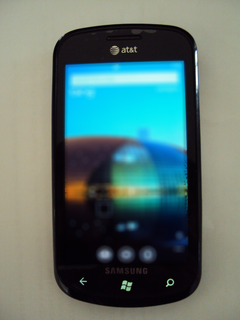 W
WThe Samsung Focus is a slate smartphone which runs Microsoft's Windows Phone operating system. It features a 1 GHz Qualcomm® Snapdragon™ processor, a 4.0-inch Super AMOLED screen, and 8GB of internal storage. As of November 2011, it is the 4th lightest and thinnest Windows Phone, behind the Samsung Focus Flash, HTC Titan and the Samsung Focus S, a more high-end version of the original Focus.
 W
WThe Samsung Omnia 7 is a smartphone which runs Microsoft's Windows Phone operating system. It features a Qualcomm Snapdragon QSD8250 SoC clocked at 1 GHz, a 4.0-inch Super AMOLED screen with a resolution of 480×800, and either 8 GB or 16 GB capacity of internal storage. The phone does not contain a microSD slot for extra storage. It was available in Europe and South Africa, whereas the Samsung Focus was sold in the United States. The Samsung Omnia 7 supports Windows Phone 7.8.
 W
WThe Samsung Omnia W is a slate device running Windows Phone operating system 7.5. The phone is manufactured by Samsung. The device features Qualcomm Snapdragon MSM8255 SoC clocked at 1.4 GHz, 3.7-inch Super AMOLED screen with a resolution of 480 x 800 and 8 GB of internal storage.
 W
WThe ZTE Orbit is a budget smartphone developed by ZTE that runs Microsoft's Windows Phone 7.5 operating system. It was announced on February 27, 2012 and became available in September 2012. The Orbit is the first Windows Phone device to include near field communication. In late September 2012 it was announced a CDMA variant of the Orbit would also launch as the ZTE Render in the US on US Cellular.